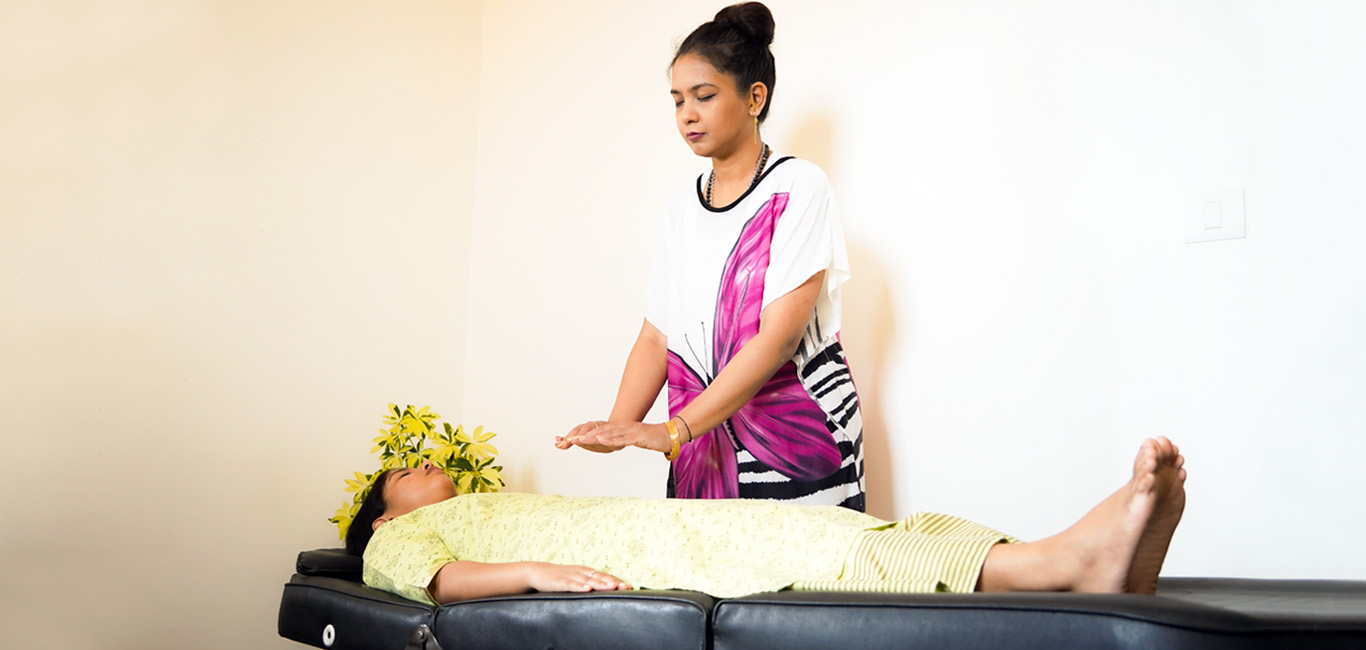
Reiki, the ancient Japanese energy healing technique to unwind and reduce stress, relies on body’s intrinsic healing abilities. It is based on the notion that an invisible ‘life force energy’ or Ki flows through one’s body, that can be guided to help the body heal. “Reiki is a healing system that relies on the energy fields of the universe,” says Bengaluru-based Reiki practitioner Ashwita Goel.
While there is yet to emerge scientific backing for Reiki’s supposed benefits, those who have tried it vouched for its benefits and spoke to Happiest Health about it, while the scientific verdict remains mixed. But if you want to give it a shot, here’s what you need to know.
How does it work?
Reiki practitioners believe that the invisible energy (Ki) flowing through our body is what keeps us healthy. A person’s Ki can, however, become unbalanced resulting in either emotional or physical stress. Reiki healers say the practice works by bringing the body’s energy back into equilibrium.
According to the International Association of Reiki professionals, Reiki is not a cure for all health conditions. Instead, it promotes a balanced mind-body state that involves clearing and rebalancing on a spiritual, emotional, and mental level that is therapeutic and helps to induce a relaxation response.
Here is what a typical Reiki session looks like:
Reiki treatments are often performed in a calm and peaceful setting. However, the procedure can be performed anywhere. The person will either lie on a table or sit in a chair comfortably during a session which usually last for 30-60 minutes.
The Reiki practitioner places their hands just above the troubled area (hands-on healing), where it is believed that the recipient’s energy centres or chakras are. Their hands are kept in position for 3-10 minutes – this is touted to improve the energy flow and restore the body’s balance. This is repeated for different parts of the body based on the affected chakra.
Apart from hands-on healing, practitioners also perform Reiki healing from a distance. Many Reiki practitioners use crystals or pendulums for their practice but according to Goel, the original Reiki practice does not involve using such things.
Personal experiences
49-year-old theatre practitioner Rajesh P.I. says he experienced the benefits of Reiki.
“Eleven years ago I had just got divorced and I was extremely depressed and had no clue of what was going on in my life. That’s when a friend told me about Reiki. Three months of practicing it, helped me to heal and balance my life.” There is research to back his personal experience: A 2010 study published in the analysing the effect of Reiki on depression and anxiety on older adults found an improvement in mood and relaxation in older people.
One review study has shown that Reiki works better than a placebo as a beneficial therapy. Reiki was applied repeatedly over an extended period, with 1 or 2 sessions weekly over a period of up to eight weeks. In three studies, Reiki was found to be more effective than placebo, resulting in reduced anxiety and depression, and improved self-esteem and quality of life.
Reiki in animals
“I had a rescued St. Bernard, Bernie, who had epilepsy. All the medication would numb him all throughout the day. It was painful to see him like that. So, after a few months I started giving him reiki which proved effective, and the episodes of epileptic seizures decreased a lot,” says Rajesh who is also a Reiki practitioner specialising in animal Reiki which is similar to the Reiki given to people. He adds that animal Reiki helps animals regain their energy levels.
Bengaluru-based Ayurveda expert, Dr Anagha Bhat says that she was into healing and wanted to learn new healing methods. That’s when she learned Reiki. “So, if we can combine some of the other healing systems with your practice, it really benefits not only for the healing person but for the healer also,” she adds.
Does it really work?
There is not much scientific evidence or in-depth scientific research on how Reiki works, but for many, it is mostly the feeling making it extremely individualistic. While some say that they experience a tingling effect when they receive it others acknowledge that they do not feel anything during the session. Practitioners and healers alike stress that it helps relieve:
- Headache
- Physical stress
- Emotional imbalance
- Low energy levels
- Tension
A study done by Andrea Chirico conducted at the Breast Oncology Department of the National Cancer Institute ‘Giovanni Pascale’ Foundation in Naples, Italy shows that self-efficacy enhances the efficacy of reiki treatment in Cancer patients. It was observed that patients with higher Reiki efficacy demonstrated a stronger response to the reiki intervention for both anxiety and mood compared to patients with lower reiki efficacy.

















